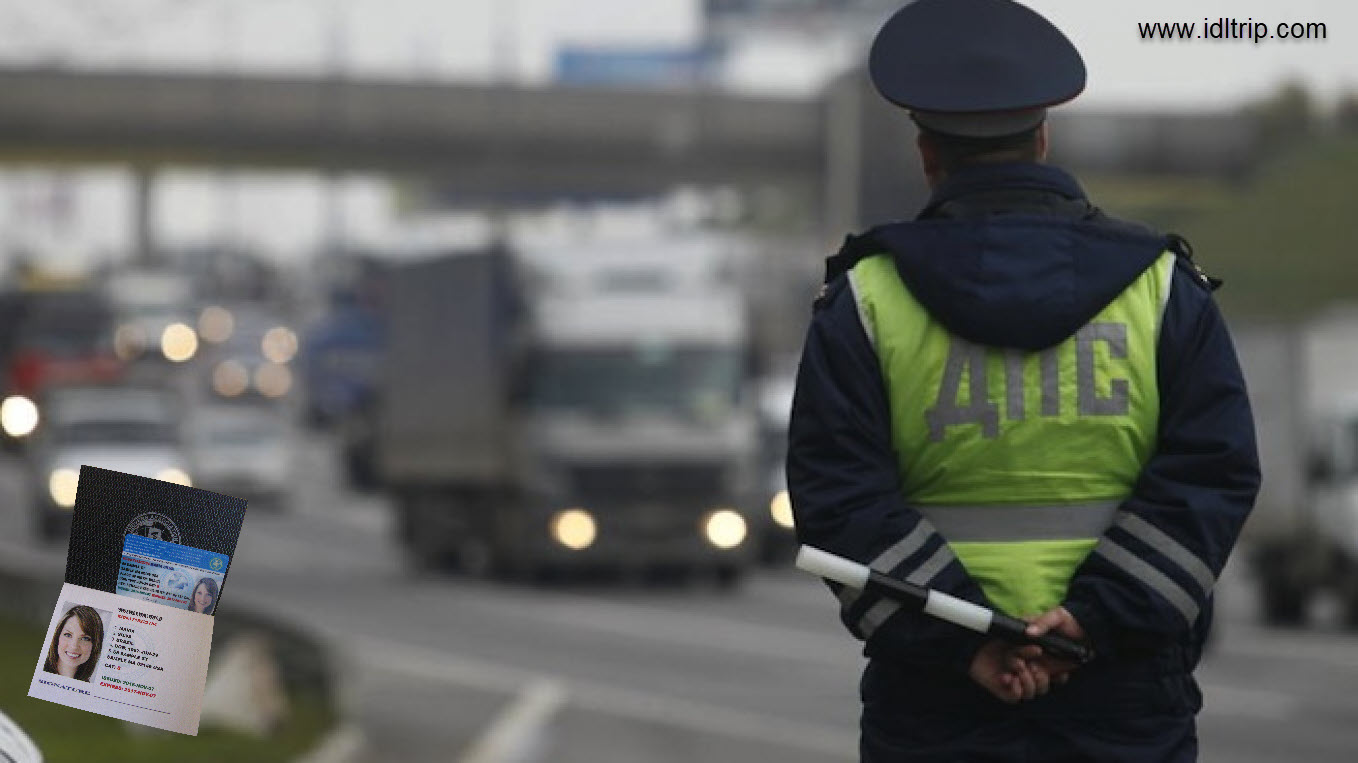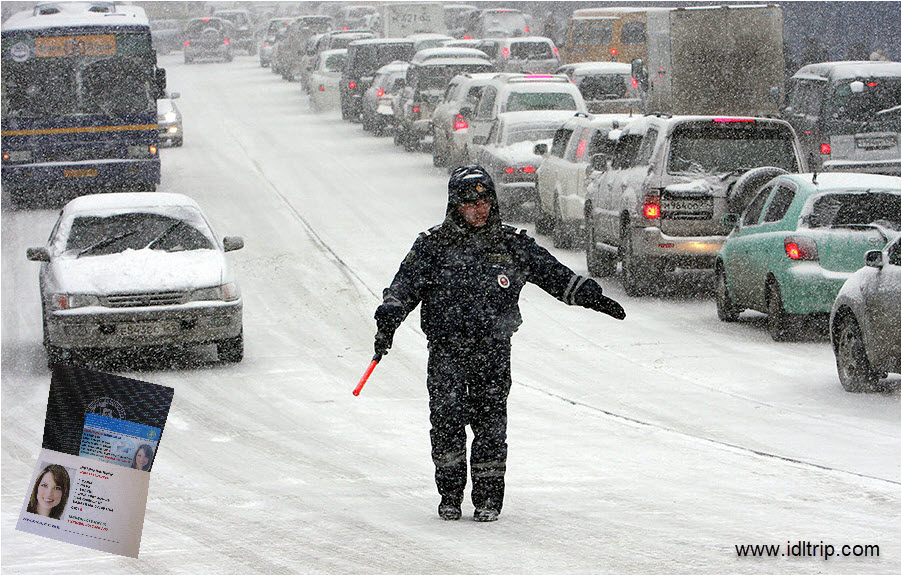Driving in Russia. Driving Licenses Must Be Translated Into Russian. Winter Driving Conditions Are Harsh. Not Enough Road Signs.
Driving in Russia: Road Rules and Regulations
Driving in Russia can be an alternative for adventurous people who want to see the countryside or travel at their own pace around the biggest country in the world. Nevertheless, in much of Russia, driving conditions are remarkably different from western countries. If you're not used to local road conditions and driving culture and don't understand Russian, independent car travel can be challenging and even dangerous. Roads may be poorly marked, if marked at all, and poorly maintained, especially outside the cities and towns. Road numbers are not well marked, and direction signs are normally in Russian only.
In Russia, traffic moves on the right hand side of the road and cars overtake on the left. It is illegal in Russia to carry unauthorized passengers or to even pick up hitchhikers. If caught, you may have to pay a heavy fine. Using the horn is not allowed at any time except in the case of extreme danger.
You must be very careful while driving during the cold winter months in Russia. Certain passes such as the ones nearer to Siberia, are not possible to cross during severe winters. Therefore snow tyres are compulsory during the cold. Always have dipped headlights on if the visibility is low and especially during the early morning fog.
Driving Licenses Must Be Translated Into Russian
Foreign drivers staying in Russia may use a driver’s license from their country of origin. This is super convenient for visitors staying less than six months. However, for a license to be considered valid, foreign drivers must first have it translated into the language of Russia. Consisting of 33 letters, this unique alphabet is derived from Cyrillic script, combining Greek and Glagolitic. Fortunately, an IDP, or International Driving Permit, translates any license into nine languages, making life a little easier. It may require some extra work on your part but it ensures that everyone understands your license.

It is quite difficult to get a Russian driver’s license. However, even if you manage to do so, you will still require major survival skills in order to combat the lawlessness regarding traffic and road regulations. For example, a painted line down the middle of the road divides on coming and going traffic. However, you will find that most people cross the line without so much as a thought. Therefore you must be extremely careful while driving and try to avoid rush hour.
An International Driver’s license must be accompanied with your original driving license. If the driving license is in English or any other language, a translation must be accompanied. There are certain documents which you must carry with you at all times no matter where you are travelling in Russia. These documents include your passport, a photo ID to validate your license, an itinerary bearing your name, citizenship, the car registration number and the full details that you presented to the Russian Federation during entry which includes all stops and routes that you will be taking. You must also carry the form that was provided by the Russian Customs department giving you permission to take the car out of the Russian Federation when you are leaving the country. Also carry with you all the petrol vouchers that you purchased near the borders and an insurance certificate for your car.

The legal driving age varies from country to country and state to state. In the US and Canada, most drivers are first legally licensed at 16. Some states, like South Dakota, buck convention with the legal driving age beginning at 14. In Russia, drivers aren’t legally allowed to get behind the wheel of a car until after their 18th birthday. Teens with a longing to ride a motorcycle luck out with an eligibility for a license at 16. Due to these laws, foreign drivers under the age of 18 are legally unable to drive in Russia.
Some cities in Russia are more difficult to drive in than others. Moscow, for example, is especially tricky. There are three main roads in the city: the Moscow Ring Road (or MKAD), the Garden Ring, and Third Ring. Before driving here, it’s important to know which Ring Road is safest to travel at which times of the day. The Garden Ring gets so backed up that it often leaves drivers stranded in traffic for hours. Unlike other main roads, the Garden Ring sees traffic jams all day, not only at peak hours.

The speed limits in Russia vary depending on where you are driving. In built-up areas the speed limits are 60kph and it is 90kph everywhere else. A tolerance level of 10-20kph is allowed. However, if you cross the tolerance level, you might be heavily charged and your license might be confiscated.
Russia’s lack of signage affects drivers in many ways, including an inability to follow speed limit changes. Unlike other countries, Russia doesn’t depend on an official motorway, but does have intercity freeways, which connect across the country. These highways are capped at a speed of 113 kilometers per hour. Some are only 90 kmh, while others are 60 kmh. Drivers in residential areas, school zones, and construction zones have yet more speeds to account for. With few signs and frequent speed fluctuations, it’s difficult to determine how fast one should drive.
Not Enough Road Signs
Despite the excessive use of road rules in Russia, there are seldom enough traffic signs to tell foreigners what to expect. From speed indicators to warning signs, drivers who are unfamiliar with roads could be in for some serious confusion. What’s worse than a lack of signage? An inability to read them! Signs in Russia sometimes have translations into other languages but oftentimes not every language. Unless drivers have an eye for Latin script, it’s a good idea to map routes early and brush up on the Russian alphabet.
It is a good idea to learn the road signs and symbols before you start driving in Russia. The Police are authorized to collect fines on the spot. This practice is quite common. In order to avoid the Russian traffic and heavy winters, be aware of the best time to drive. Always be familiar with the routes you plan to travel.
Winter Driving Conditions Are Harsh
As we mentioned above, some regions of Russia see arctic weather conditions and intense snowfall. This puts a whole new spin on the concept of winter driving. Forget about slapping on some snow tires and hoping for the best, Moscow drivers see such low temperatures that tires seize and locks freeze. When travelling during winter, be prepared to maneuver through snow, ice, slush, and hail. Some tourist sites recommend taking a winter driving course before traveling to Moscow during its cold season, especially for foreigners from sunny climates.

Driving a car in winter conditions may be a real challenge without proper training and experience. The golden rule for driving on snow, ice and slush: don't rush. Braking distance increases dramatically, increase distance to the car in front of you from the standard 3 seconds to a 5–6 seconds or more. Inexperienced drivers should drive very carefully until they get used to the conditions and the car; experienced drivers always "feel" the contact between tires and road. Powerful acceleration or hard braking quickly tells you how slippery the road is, do a "brake test" frequently to get precise information on the road surface.
Russia’s intense weather transitions lead to more than just difficult winter driving, they also cause a plethora of potholes. A major complaint seen across tourist forums for travel is road damage. The heat Russia experiences in the summer is so intense it melts the asphalt on roads. When winter hits, ice causes ruts, and spiked tires force holes in the road. This makes a standard journey across a motorway in Russia feel like a mountain bike ride through a rocky trail. Unfortunately, road work just can't keep up with the damage.
Finally, visitors to Russia have more to worry about than simply following the rules of the road. Drivers from Russia are known for being highly competitive to an extreme. Reports of showing off on busy roads, street race-style speeding, and comparing car size are commonplace. It’s more of an annoyance than a danger in most cases but tourists are warned not to engage. Remember, what’s most important in the end isn’t size or speed but reaching a destination safely that really counts.
